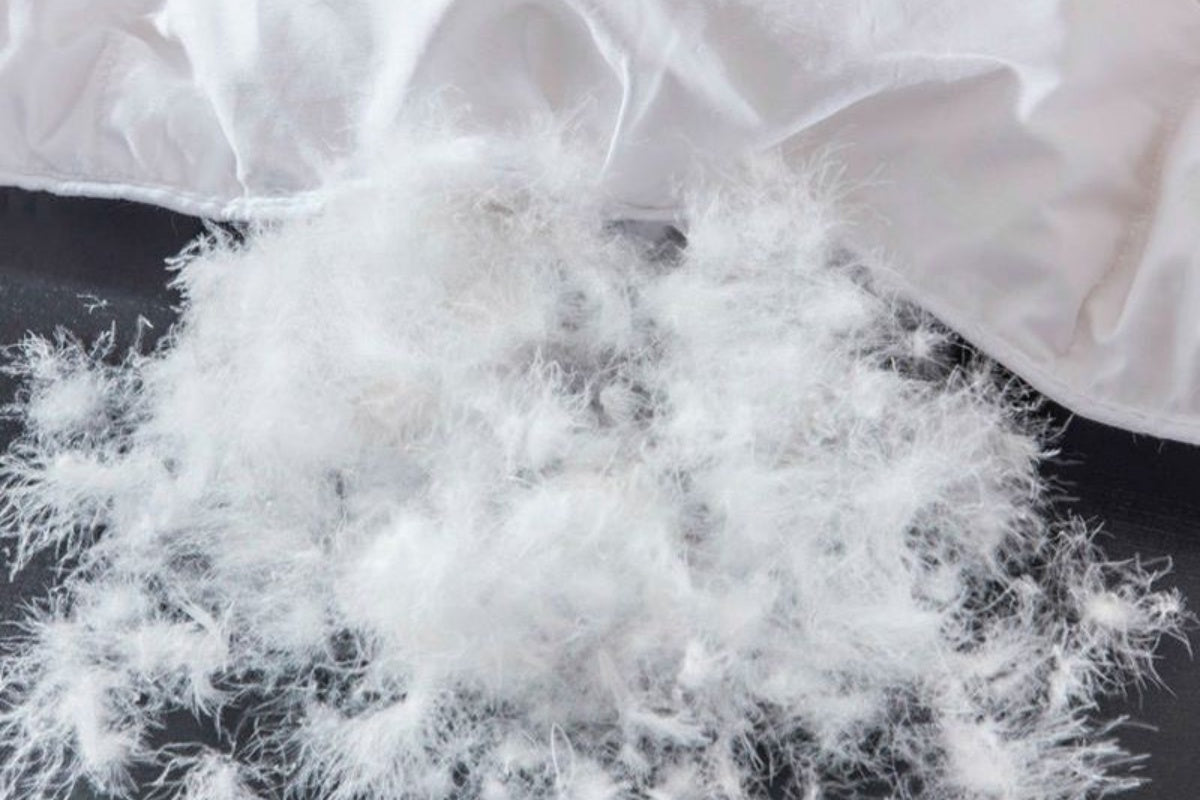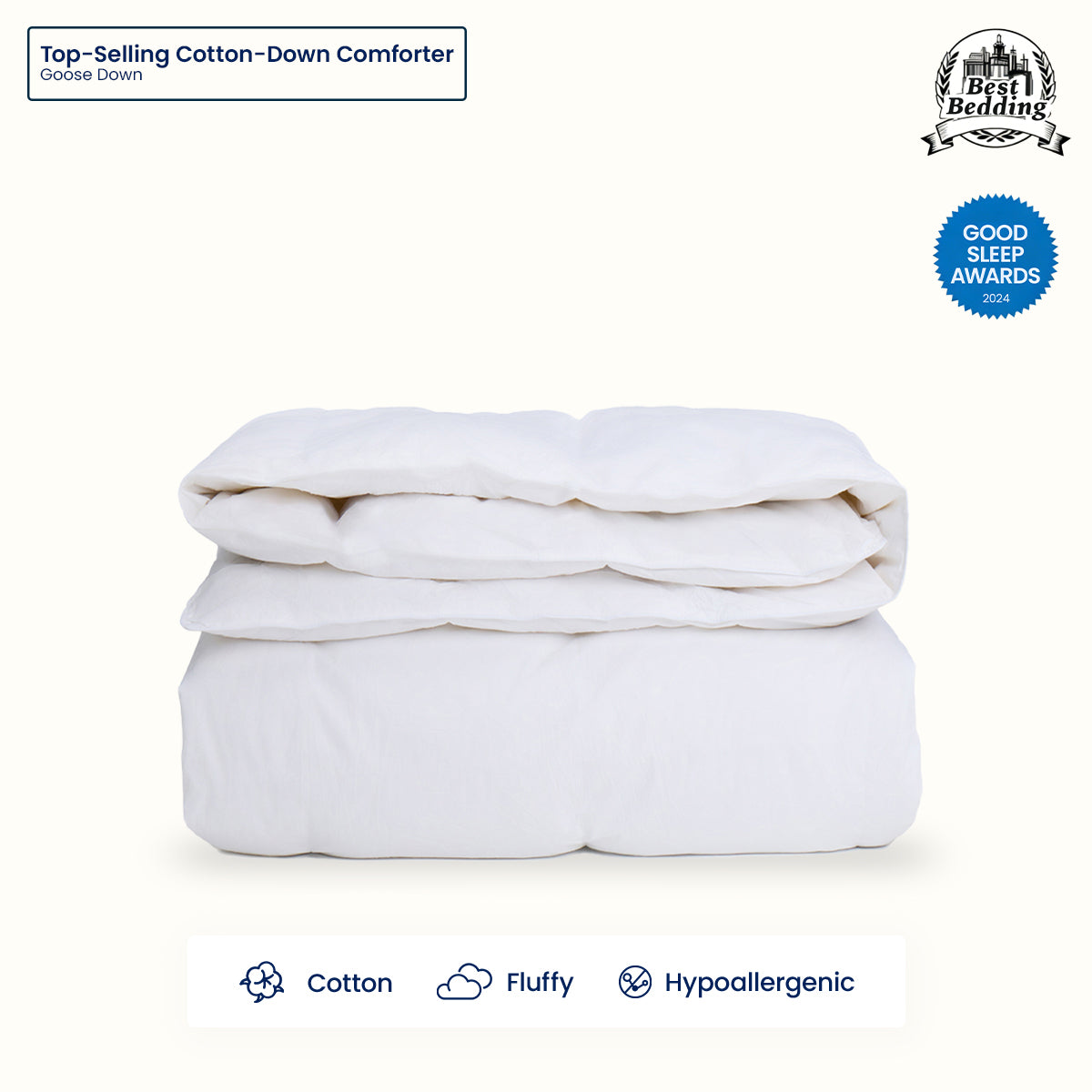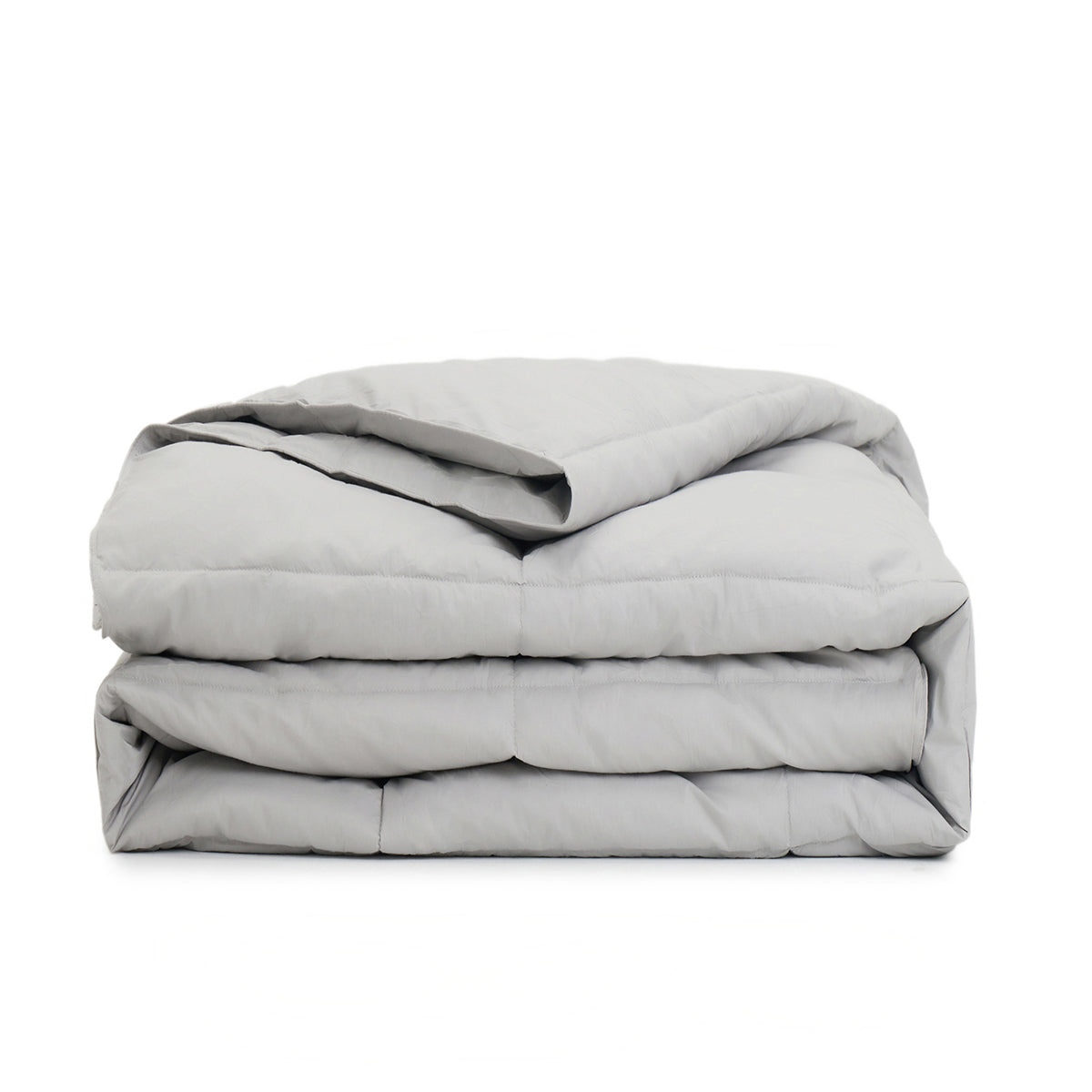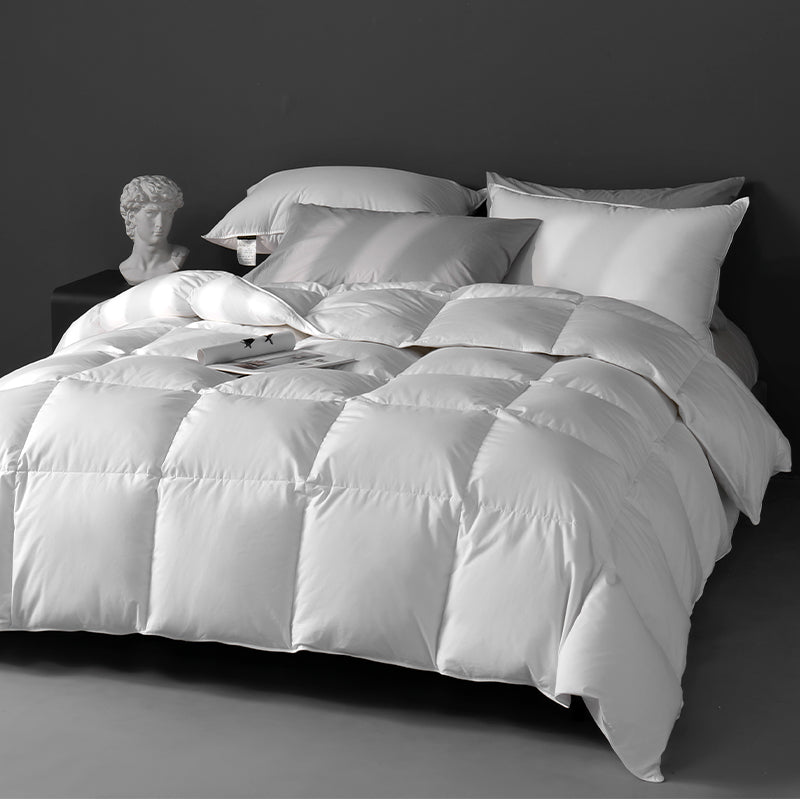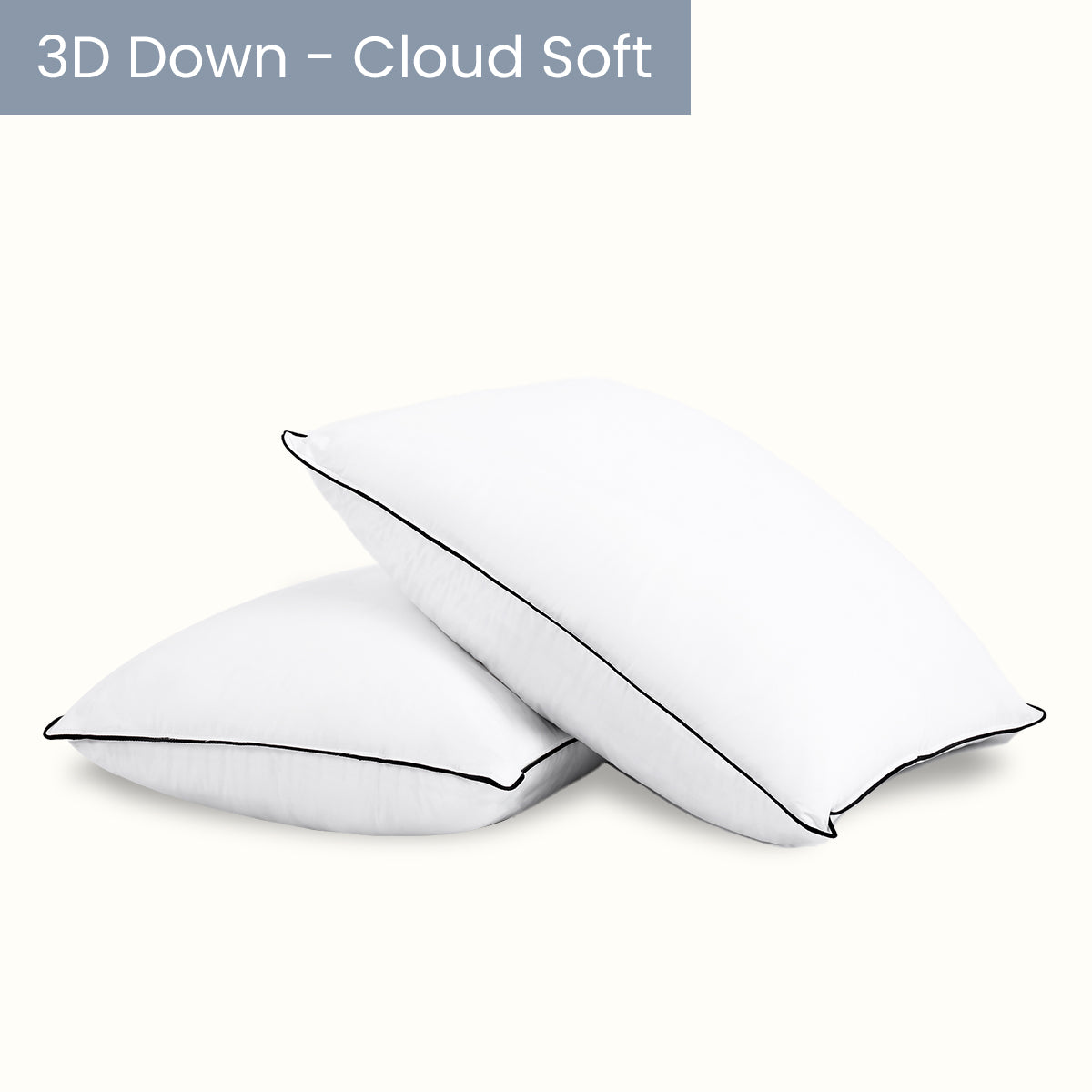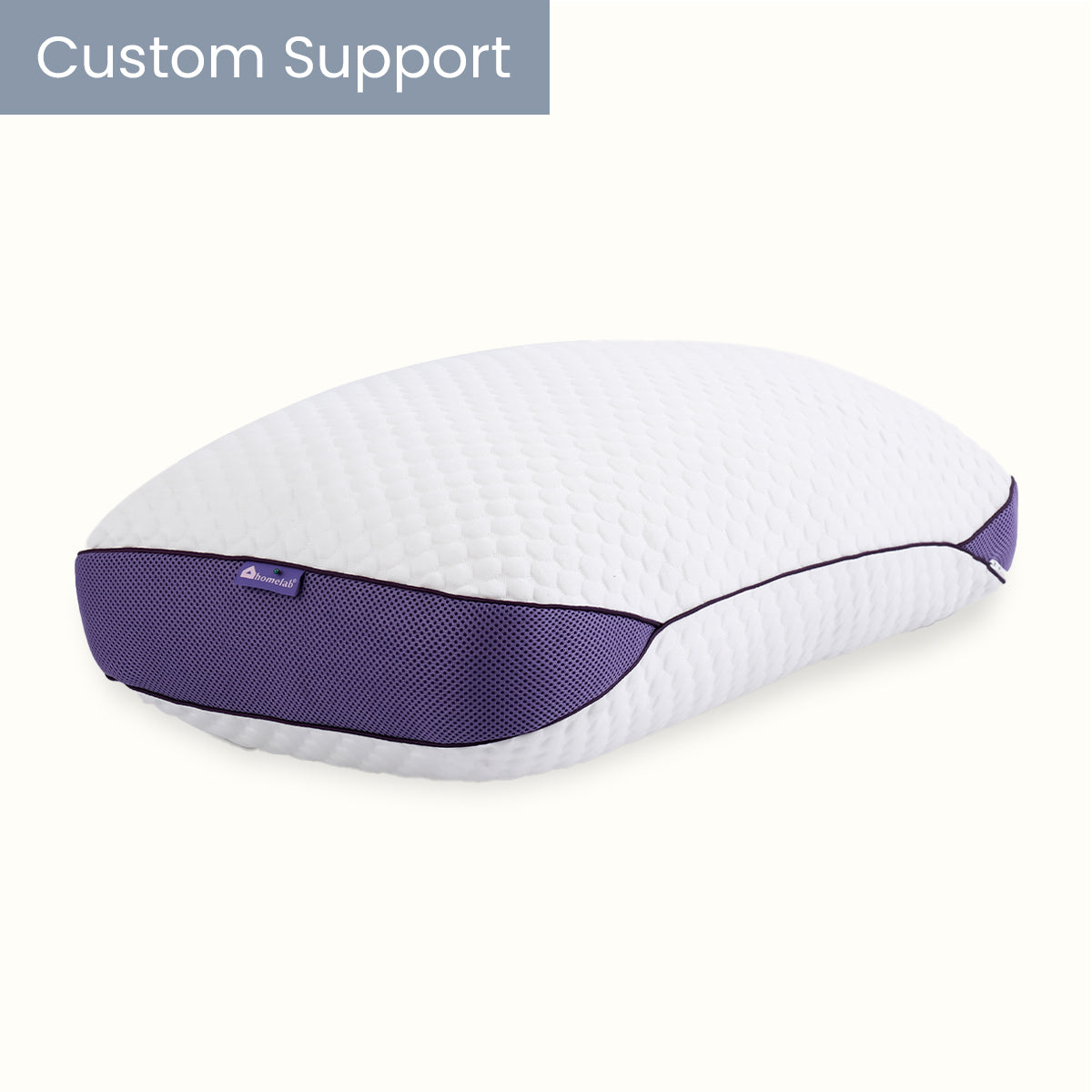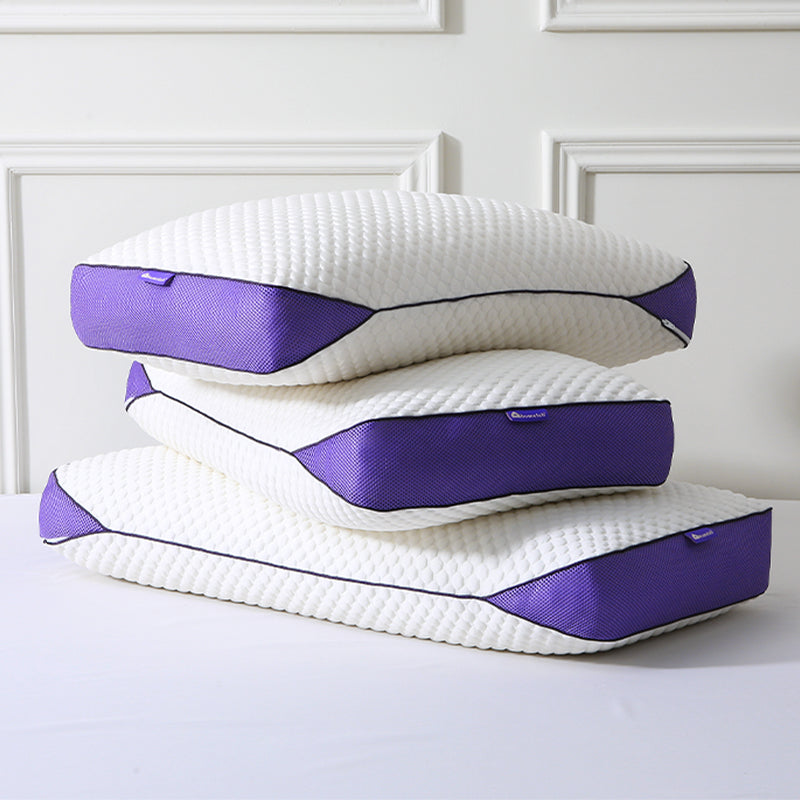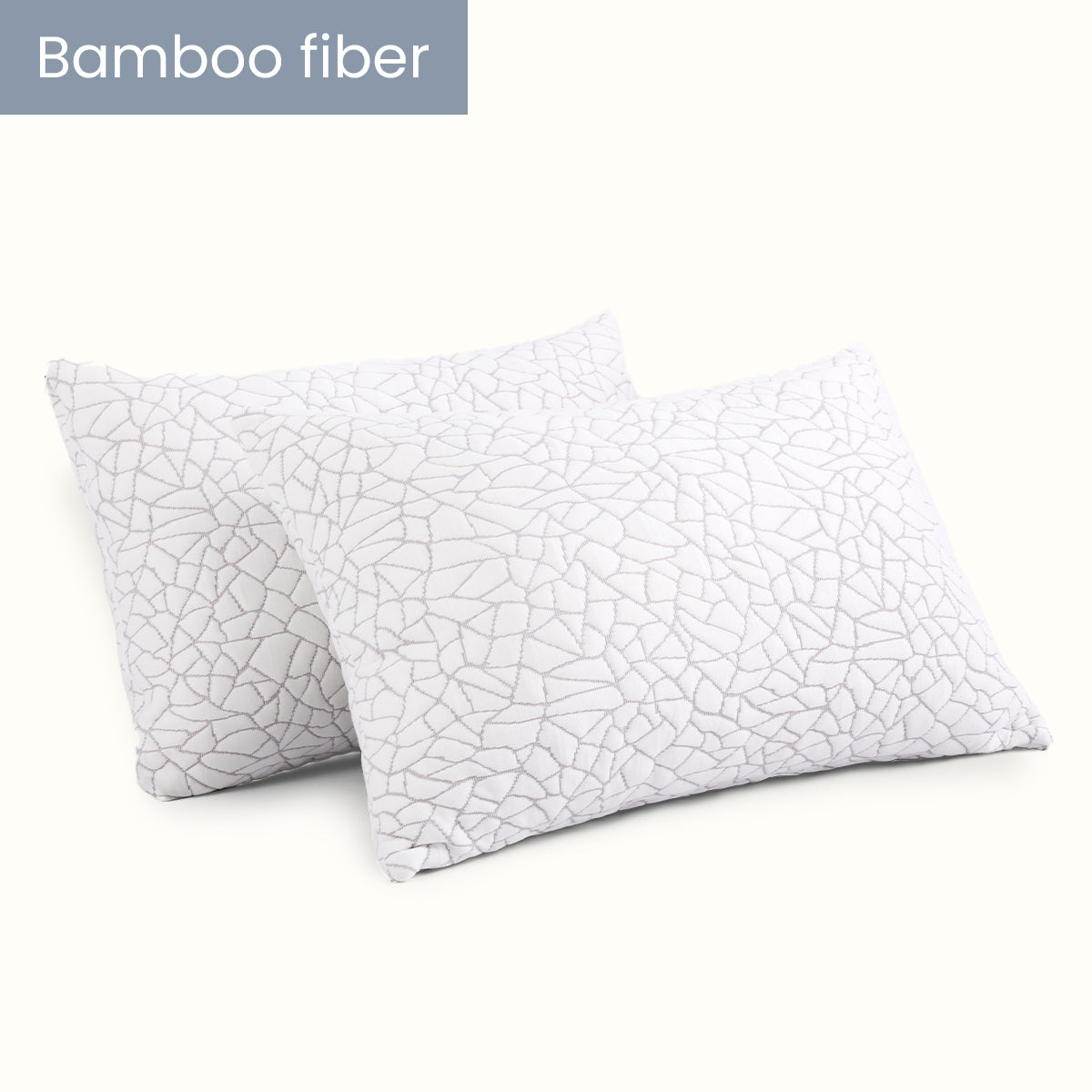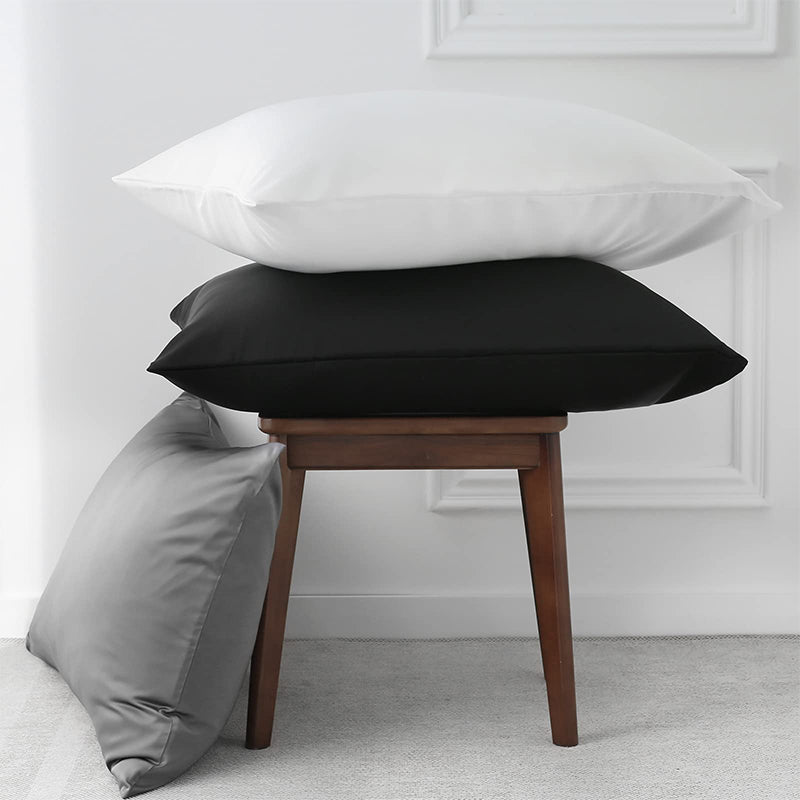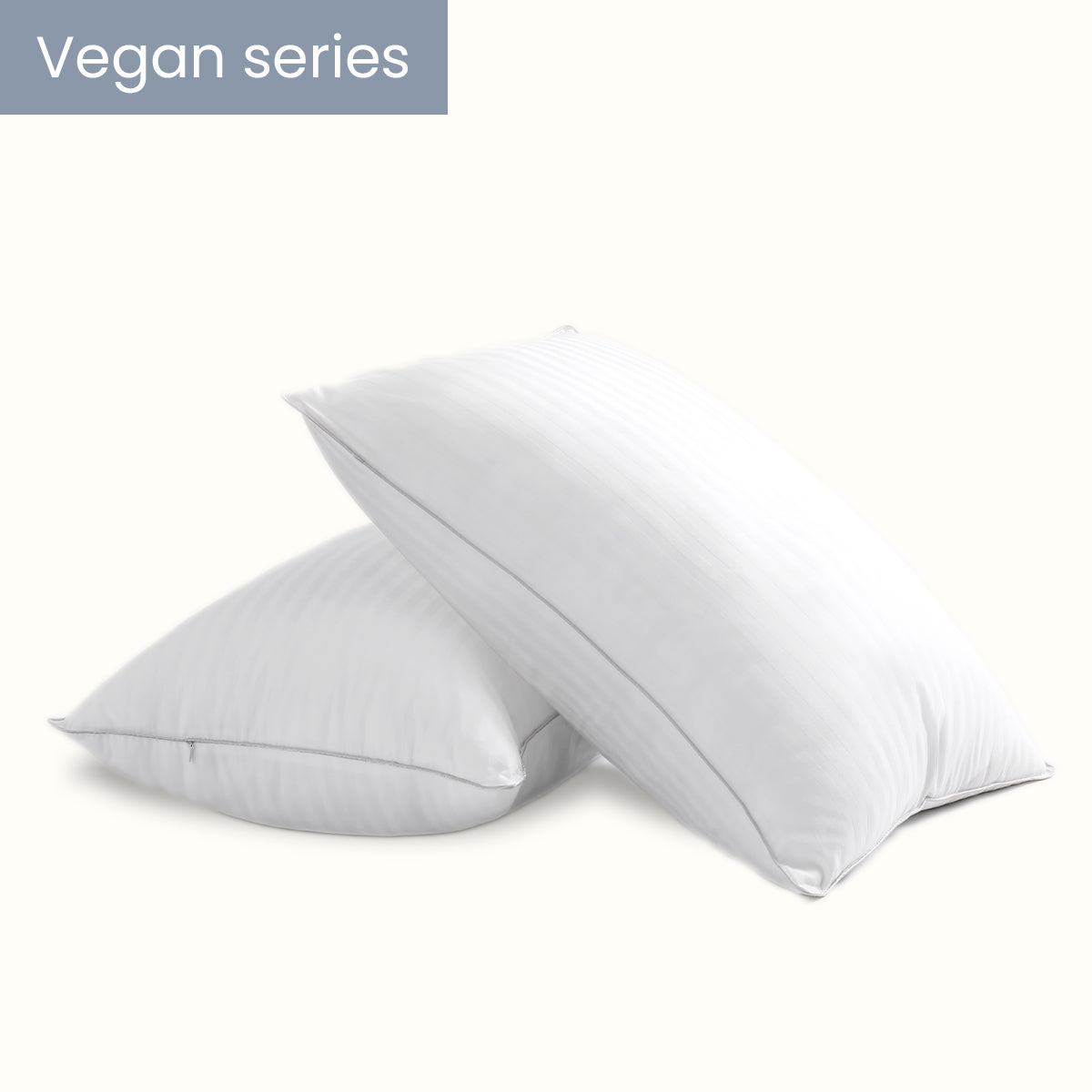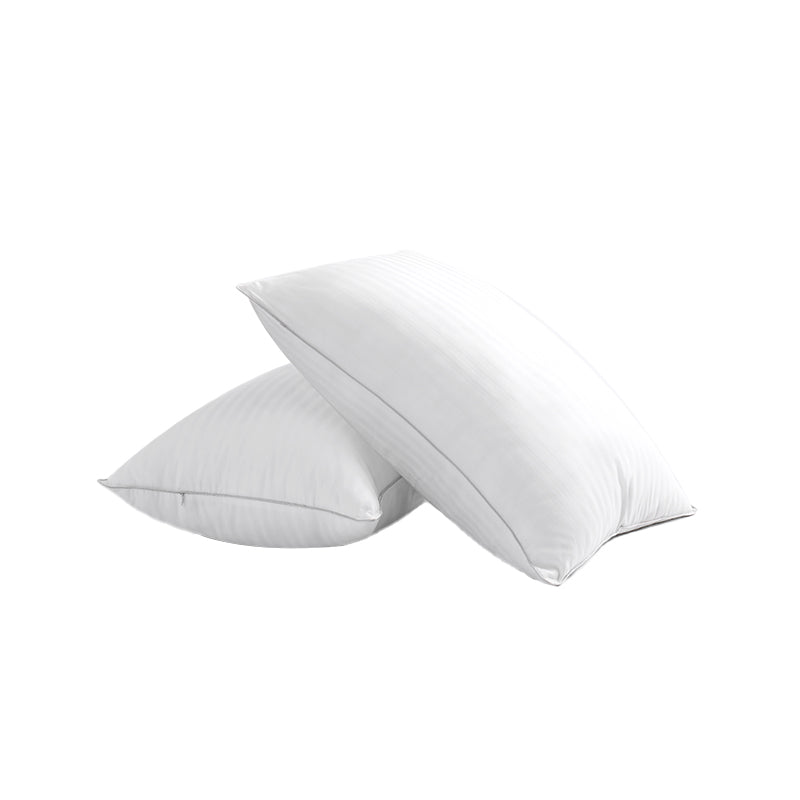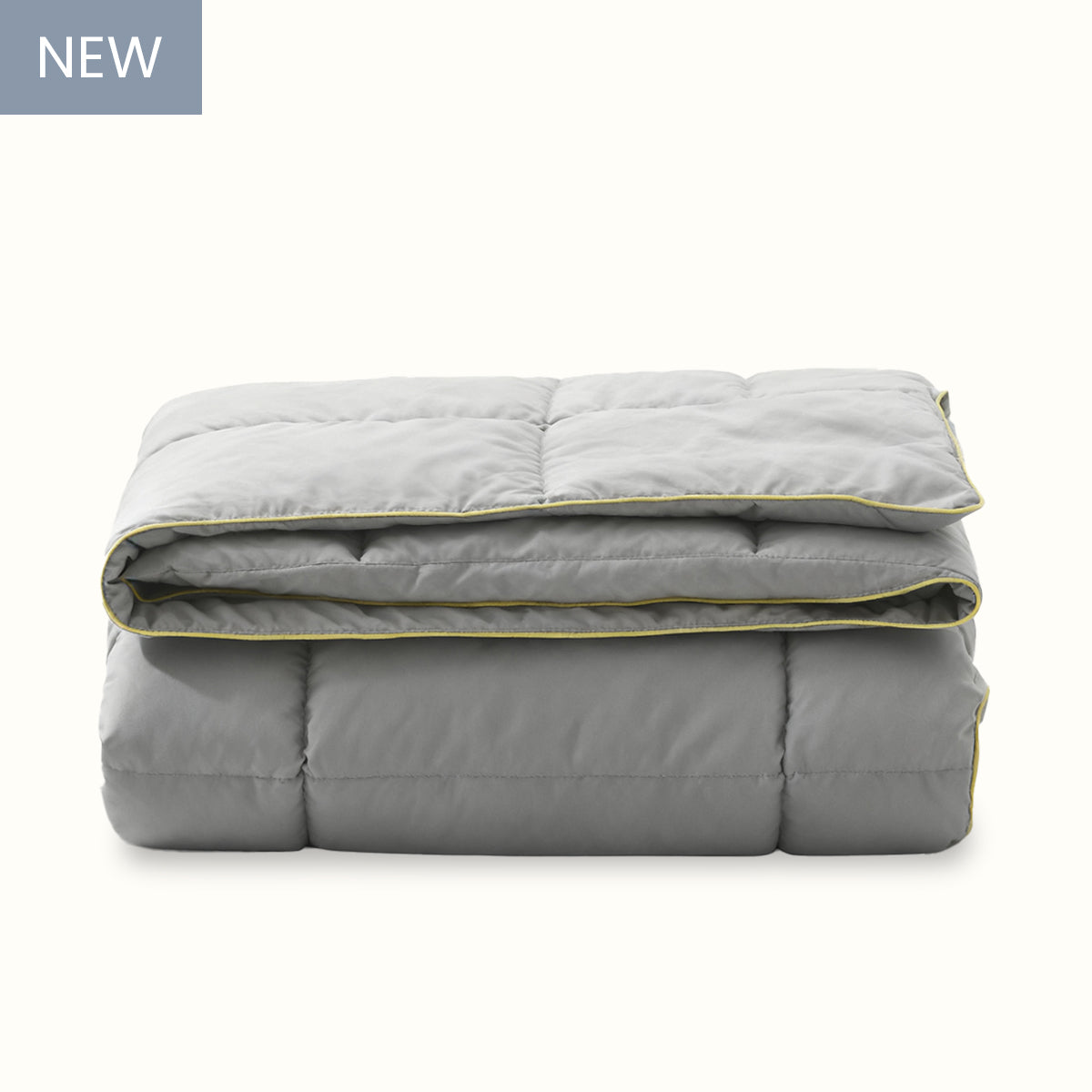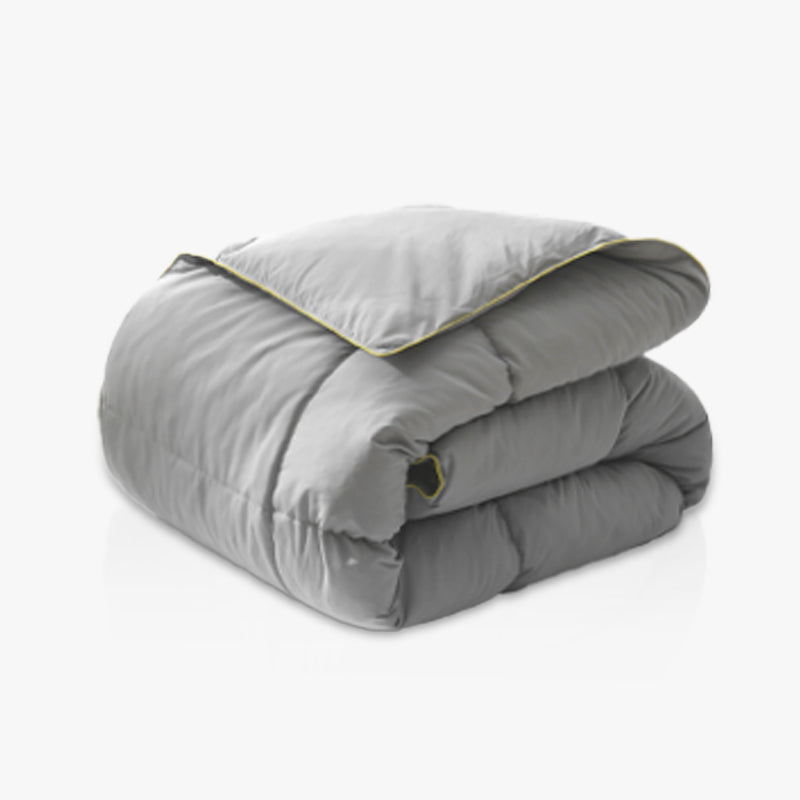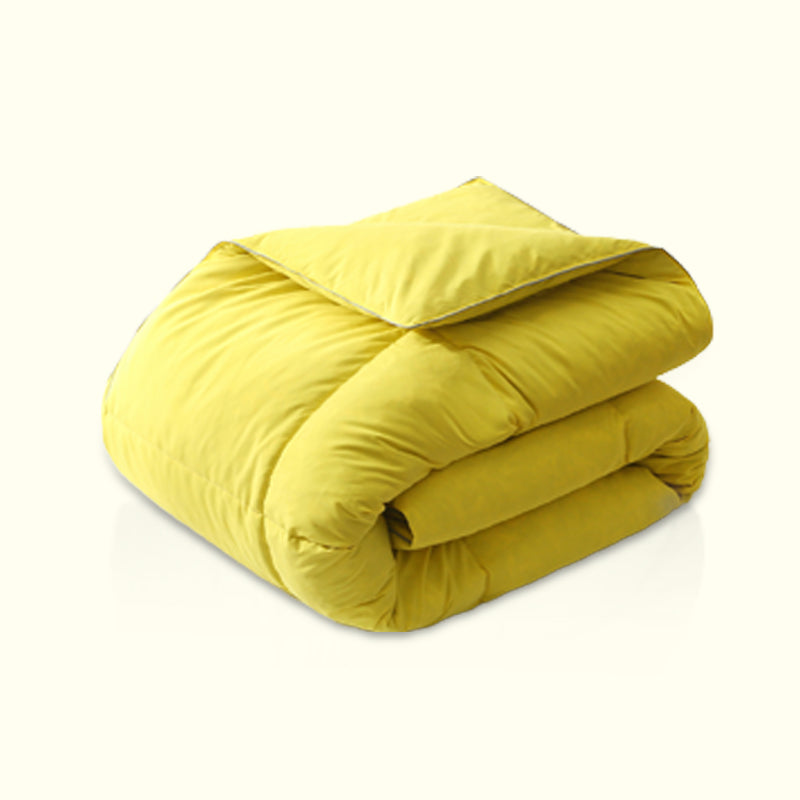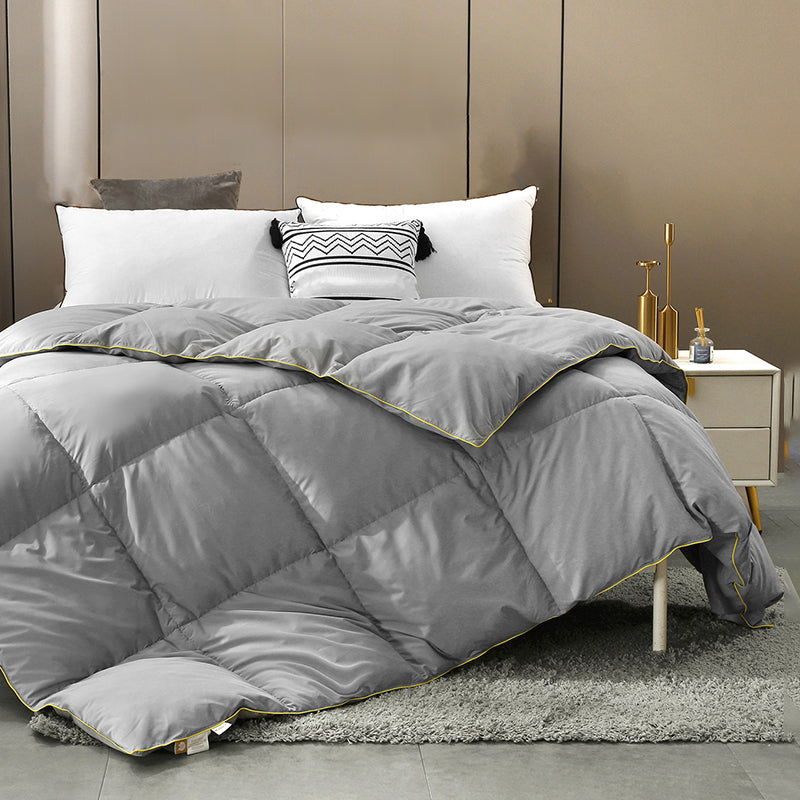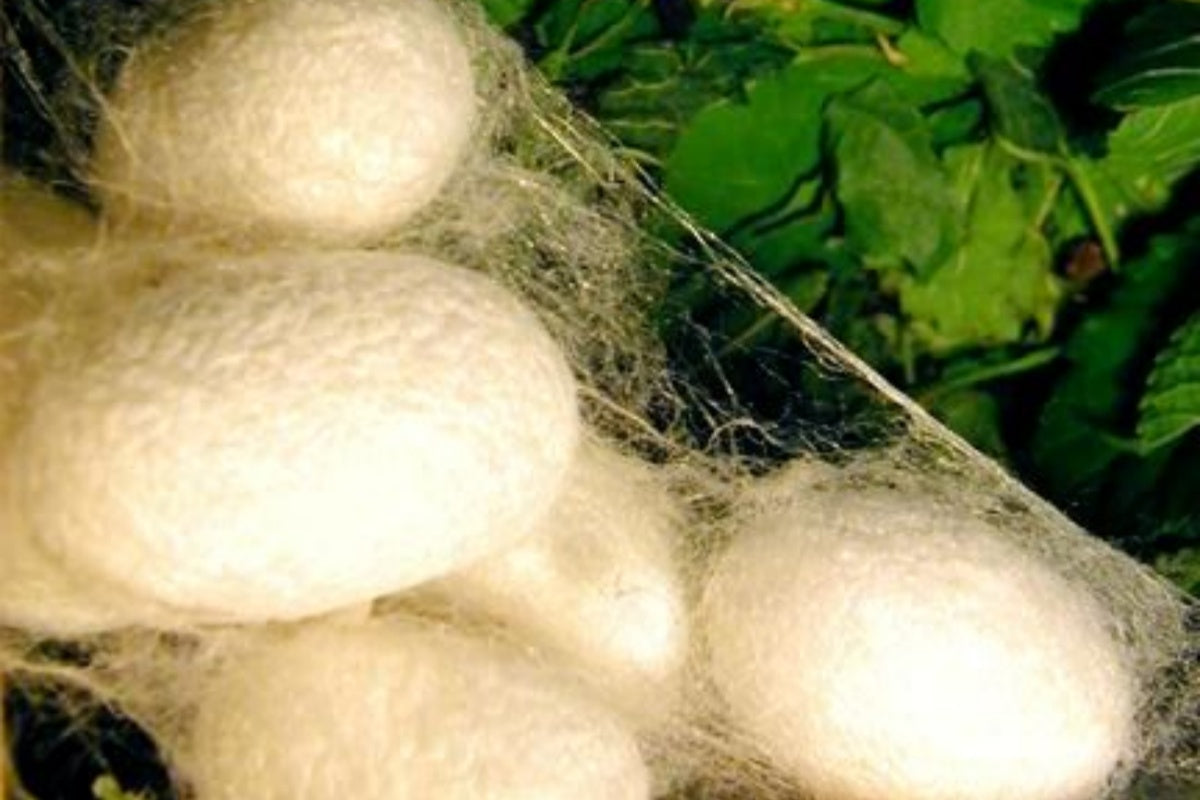Daunendecken sind dank ihres geringen Gewichts und ihrer Wärmeleistung im Herbst und Winter bei vielen Menschen sehr beliebt. Mit der Zeit verlieren sie jedoch an Flauschigkeit und Wärmeleistung. Tatsächlich lässt sich die Flauschigkeit einer Daunendecke durch die richtige Pflege lange erhalten und ihre Lebensdauer verlängern. Im Folgenden geben wir Ihnen praktische Tipps zu drei wichtigen Aspekten: täglicher Gebrauch, Waschen und Reinigen sowie Aufbewahrung.

I. Tägliche Wartung: Achten Sie auf Details, um Probleme von vornherein zu vermeiden.
Kleine Gewohnheiten im Alltag beeinflussen die Flauschigkeit einer Daunendecke direkt. Durch die Beachtung dieser Details lassen sich Probleme wie Verklumpen und ungleichmäßige Verteilung der Daunen effektiv reduzieren, sodass die Daunendecke stets schön bauschig bleibt.
1. Vor Gebrauch auslüften lassen, um die nach unten zeigenden Büschel aufzufrischen.
Wird eine Daunendecke längere Zeit im Kleiderschrank aufbewahrt, insbesondere in einer feuchten oder luftdichten Umgebung, kann sie Feuchtigkeit aufnehmen, einen leichten Geruch entwickeln und die Daunen verlieren durch Kompression an Bauschkraft. Daher sollte die Decke vor jedem Gebrauch (vor allem nach einer Saison) 1–2 Stunden an einem gut belüfteten Ort auslüften (Hinweis: Direkte Sonneneinstrahlung vermeiden). Frische Luft entfernt Feuchtigkeit und Gerüche, sodass sich die Daunen wieder entfalten und für die nächste Benutzung wieder flauschig werden.

2. Verwenden Sie einen Bettbezug, um Abnutzung zu reduzieren.
Die Füllung einer Daunendecke besteht aus Federn von Wasservögeln wie Gänsen und Enten, wobei Proteinfasern den Hauptbestandteil bilden. Häufiges Waschen kann die Struktur der Daunenflocken beschädigen und ihre Bauschkraft verringern. Es empfiehlt sich daher, einen separaten Bettbezug zu verwenden und die Ecken des Bezugs mit Bändern am Deckenkern zu befestigen, um die Reibung zwischen Bezug und Kern zu minimieren. Dies verhindert nicht nur, dass der Deckenkern direkt mit Staub und Schweiß in Berührung kommt und reduziert somit die Anzahl der Wäschen, sondern schont auch den Stoff und die Daunen, indem verhindert wird, dass die Daunenflocken durch Reibung brechen.
3. Klopfen Sie es regelmäßig ab, um die Daunen gleichmäßig zu verteilen.
Im täglichen Gebrauch kann sich die Daunenfüllung durch Wenden im Schlaf oder hängende Aufbewahrung ungleichmäßig verteilen und lokale Klumpen oder Dellen bilden. In diesem Fall ist kein übermäßiges Bearbeiten nötig. Klopfen Sie die Oberfläche der Daunendecke regelmäßig (z. B. 1-2 Mal pro Woche) sanft mit der Hand ab oder fassen Sie die Ecken der Decke mit beiden Händen und schütteln Sie sie leicht. Klopfen Sie dabei nicht zu fest, um die Daunenklumpen nicht zu beschädigen. Durch die leichte Vibration verteilen sich die Daunen wieder gleichmäßig und erhalten ihre flauschige Struktur zurück.
4. Vermeiden Sie scharfe Gegenstände, um ein Auslaufen der Daunen zu verhindern.
Der Stoff einer Daunendecke ist größtenteils daunendicht. Ist er jedoch beschädigt, können die Daunen leicht austreten, was nicht nur die Bauschkraft beeinträchtigt, sondern auch die Wärmeleistung mindert. Vermeiden Sie es daher, mit Nadel und Faden Muster oder Etiketten auf den Stoff zu nähen, und achten Sie darauf, dass keine scharfen Gegenstände wie Scheren oder Fingernägel den Stoff zerkratzen. Kleine Beschädigungen sollten Sie umgehend mit einem Flicken reparieren, um ein Ausbreiten zu verhindern.

II. Waschen und Reinigen: Wissenschaftlich vorgehen, um die Daunenbüschel nicht zu beschädigen.
Daunendecken müssen nicht häufig gewaschen werden. Wenn der Kern jedoch stark verschmutzt ist und gereinigt werden muss, führen falsche Waschmethoden dazu, dass die Daunen verklumpen und spröde werden, wodurch die Bauschkraft verloren geht. Die richtige Waschmethode ist daher entscheidend für den Erhalt einer Daunendecke.
1. Verzichten Sie auf die chemische Reinigung und wählen Sie stattdessen die professionelle Nassreinigung.
Viele glauben fälschlicherweise, dass „chemische Reinigung sauberer und besser für die Bettdecke ist“. Die chemischen Bestandteile der Reinigungsmittel schädigen jedoch die Proteinstruktur der Daunen, wodurch die Daunenflocken spröde und brüchig werden und ihre Bauschkraft verlieren. Daher dürfen Daunendecken niemals chemisch gereinigt werden . Ist eine Reinigung unumgänglich, wenden Sie sich am besten an professionelle Textilreinigungsbetriebe und weisen Sie auf die Notwendigkeit einer „speziellen Nassreinigung für Daunendecken“ hin. Kleine, dünne Daunendecken für Frühling und Herbst können Sie auch zu Hause von Hand waschen: Verwenden Sie ein Feinwaschmittel (z. B. ein Spezialwaschmittel für Daunenprodukte) und reiben Sie die Flecken vorsichtig ab. Vermeiden Sie starkes Reiben und spülen Sie die Decke nach dem Waschen mehrmals gründlich aus, bis keine Waschmittelreste mehr vorhanden sind. So verhindern Sie, dass die Daunen verklumpen.
2. Richtig trocknen und längere Sonneneinstrahlung vermeiden.
Wenn nach der Reinigung noch Feuchtigkeit in der Daunendecke vorhanden ist, kann dies leicht zum Verklumpen der Daunen führen. Daher ist es wichtig, die Decke nach der Reinigung umgehend zu trocknen: Sie können sie in einen Trockner geben (wählen Sie das Niedrigtemperaturprogramm) und während des Trocknungsvorgangs 2–3 trockene Tennisbälle hinzufügen. Der Aufprall der Tennisbälle in der Trommel hilft, die Daunen aufzulockern und ein Verklumpen zu verhindern. Falls Sie keinen Trockner besitzen, können Sie die Decke flach an einem kühlen und gut belüfteten Ort an der Luft trocknen lassen. Vermeiden Sie dabei längere direkte Sonneneinstrahlung, da starkes Sonnenlicht die Ölschicht der Daunen schädigt. Dadurch trocknen die Daunen aus, verlieren ihre Elastizität und der Stoff kann ausbleichen und altern.
III. Lagerung: Vermeiden Sie starken Druck und achten Sie auf Atmungsaktivität.
Falsche Handhabung bei der saisonalen Lagerung ist der „unsichtbare Killer“, der dazu führt, dass Daunendecken ihre Bauschkraft verlieren. Die richtige Lagerungsmethode kann die Daunendecke auch während der Nichtbenutzungsphase in gutem Zustand erhalten.
1. Vor der Lagerung „auffrischen“.
Vor dem Verstauen die Daunendecke 1–2 Stunden an einem gut belüfteten Ort auslüften lassen, damit Feuchtigkeit und Gerüche verschwinden und sich die Daunen vollständig ausdehnen können. Nach dem Auslüften die Decke leicht abklopfen, um sicherzustellen, dass die Daunen gleichmäßig verteilt sind und keine Klumpen bilden.
2. Vakuumkompression ablehnen und atmungsaktive Lagerung wählen.
Viele Menschen bewahren ihre Bettdecken in Vakuumbeuteln auf, weil sie denken, das spare Platz. Doch diese Methode ist für Daunendecken fatal: Durch die Vakuumkompression stehen die Daunen lange unter hohem Druck, was die Faserstruktur der Daunenflocken schädigt. Selbst nach dem Entspannen lässt sich die Flauschigkeit nur schwer wiederherstellen, und es können sich Bakterien vermehren. Die richtige Methode ist ein atmungsaktiver Baumwollbeutel oder ein spezieller Aufbewahrungsbeutel für Daunendecken. Legen Sie die Daunendecke locker hinein, vermeiden Sie es, sie zu eng zusammenzufalten oder stark zu beschweren (stapeln Sie beispielsweise keine schweren Gegenstände darauf) und sorgen Sie dafür, dass die Daunenflocken genügend Platz zum Atmen haben.
3. Lagerbedingungen: Trocken und vor direkter Sonneneinstrahlung geschützt lagern.

Nach der Lagerung sollte die Daunendecke in einem trockenen und lichtgeschützten Kleiderschrank aufbewahrt werden, fern von feuchten Ecken (wie dem unteren Bereich des Schranks in Bodennähe) und Wärmequellen (wie Heizkörpern und Klimaanlagen). Feuchtigkeit führt dazu, dass die Daunen schimmeln und verklumpen, während hohe Temperaturen und starkes Licht die Alterung der Daunen beschleunigen und ihre Bauschkraft und Wärmeleistung beeinträchtigen. Bei relativ hoher Luftfeuchtigkeit im Kleiderschrank können 1–2 Päckchen Trockenmittel hinzugefügt werden, um die Luft trocken zu halten.
Solange Sie die oben genannten Tipps zur täglichen Pflege, zum Waschen, Reinigen und Aufbewahren beachten, bleibt Ihre Daunendecke stets flauschig und leicht. Ob kalter Winter oder warmer Frühling – sie sorgt für ein komfortables und warmes Schlaferlebnis. Denken Sie daran: Die richtige Pflege Ihrer Daunendecke ist eine Investition in erholsamen Schlaf.
Klicken Sie hier, um die APSmile-Homepage zu besuchen: Daunendecke | APSmile

Mehr lesen:
Chemische Reinigung vs. Waschen von Daunendecken: Ein einfacher Leitfaden für die richtige Wahl
Wie man eine Daunendecke richtig benutzt

